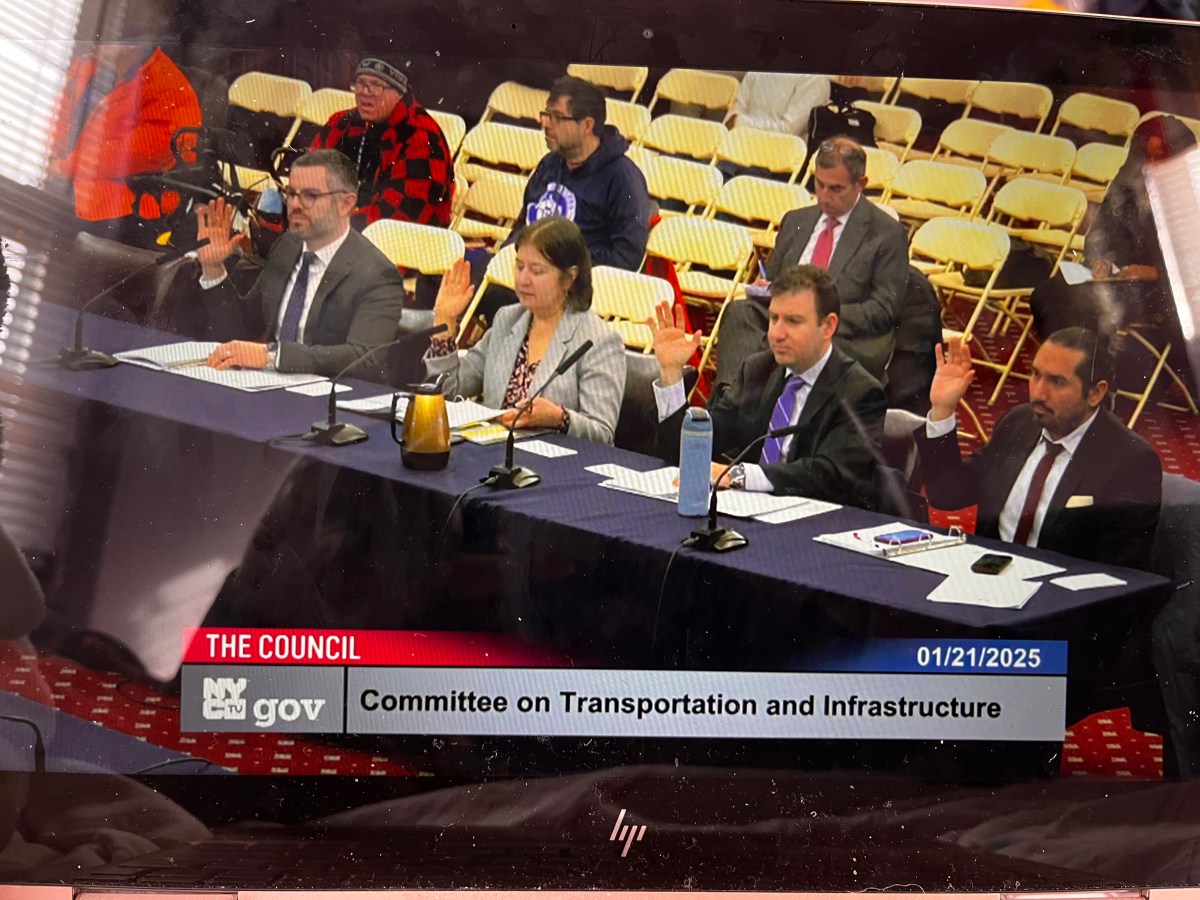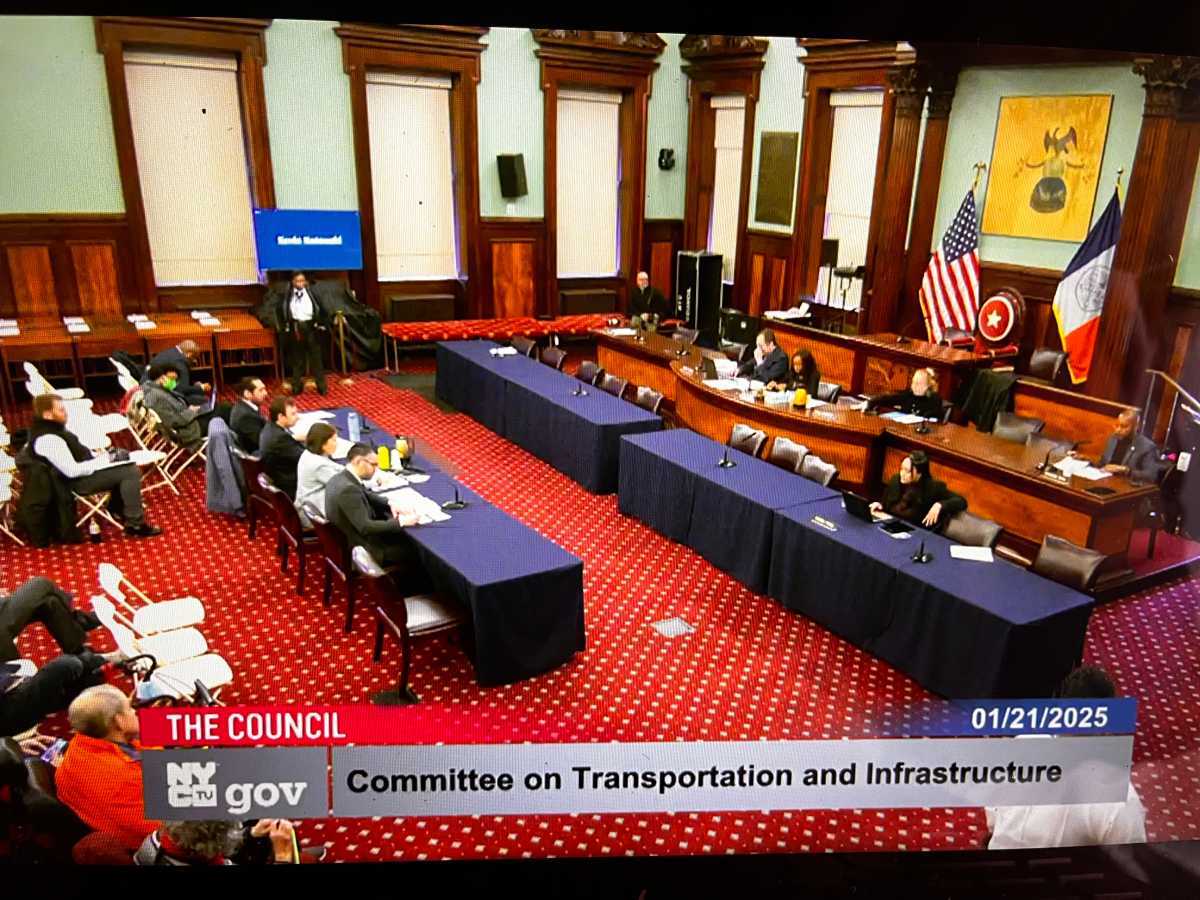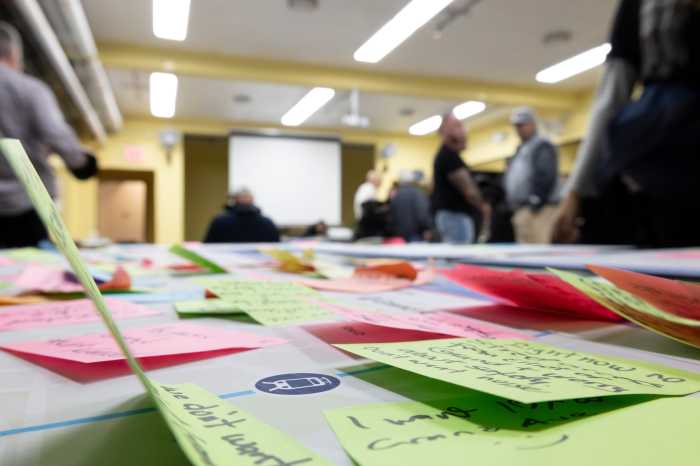The City Council’s Committee on Transportation and Infrastructure held an oversight hearing with officials from the Department of Transportation (DOT) on Tuesday, Jan 21, to address pressing issues surrounding New York City’s street infrastructure and future planning.
The committee, chaired by Southeast Queens Council Member Selvena Brooks-Powers, focused on DOT capital planning, the future of street repairs, and new bills introduced related to the meeting topics.
During the meeting, Brooks-Powers and committee members introduced and discussed six bills, including Int 0145, which would cap the correlated color temperature on new and replacement street lights; Int 0552, which would amend the city’s administrative code relating to street resurfacing timeline; and Int 0928, which would require the DOT to create a pilot project on the use of cool pavement.
Additionally, Int 1105 would track progress toward its streets master plan requirement by requiring the agency to post a description of all projects planned for that year on its website after the annual streets plan is posted.
Int 1114 would require the DOT commissioner to create an online capital project tracker.
Int 1160 would amend the city’s administrative code to require the agency to repaint pavement marking lines within one week of repaving or resurfacing. Additionally, if the DOT doesn’t complete the task within a week, it must put up signage to alert the community about the delay and provide news of the next prospective repainting date.
Parts of the hearing covered questions on what the DOT has accomplished in 2024 regarding the Streets Plan.
During the hearing, Brooks-Powers emphasized that “it is more important than ever” that the city fulfills the legal mandate of the Streets Plan. In October 2019, the council passed Int 195, referred to as the Streets Plan, to expand the city’s biking, bus, and pedestrian safety infrastructure. The law required that the DOT issue and implement a transportation master plan every 5 years. The law also requires that the DOT publish an annual update on the plan.

Brooks-Powers said, however, that since 2019, the DOT has not satisfied many of the plan’s legally mandated benchmarks regarding protected bus lanes, bus stop upgrades, and transit signal priority intersections.
Following the bills’ presentation and Brooks-Power’s remarks, a panel of DOT officials, including Margaret Forgione, the first deputy commissioner; Paul Ochoa, executive deputy commissioner; Eric Beaton, deputy commissioner of transportation, planning, and management; and Rick Rodrigez, the assistant commissioner for intergovernmental and community affairs, spoke to the committee.
According to Brooks-Powers, the DOT’s 10-year $33.5 billion capital plan includes $5.7 billion in funding for its capital street reconstruction program. So far, 20 capital streets projects are underway throughout the five boroughs, and the Department of Design and Construction (DDC) will finish the projects in two to four years.
Forgione highlighted other points of the DOT’s most recent capital street reconstruction projects. According to Forgione, this plan invests the most money ever in communities of color throughout the five boroughs, including cycling and safety improvements in northern Manhattan, Mott Haven, and Hunts Point. Also implemented are drainage improvements in Southeast Queens, the Rockaways, and South Brooklyn, as well as pedestrian and transit projects on the north shore of Staten Island and Southern Blvd in the Bronx.
Regarding the legislation introduced, Forgione said that DOT will comply with the content of Int 0145 but does not support legislating an engineering standard as the agency must adjust its practices as engineering standards change.
Forgione added that for Int 0552, the DOT does not support the bill as written, as its repaving process requires it to give utility companies, plumbers, and other agencies significant time to make repairs under the asphalt.

The DOT supports the bill’s intent for the pilot project on using cool pavement. According to Forgione, the DOT is taking numerous steps to enhance resilience and address pavement overheating. One such step is the cool corridor study completed in 2024, a first-in-a-nation study that identified numerous physical interventions, including street trees, drinking fountains, surface treatments, and seating, that can address extreme heat in the summer months. Forgione added that the DOT seeks federal funding to implement these applications in the city.
Regarding Int 1105, Forgione said the agency has concerns that putting out a list of projects at the beginning of the year could “hamper community engagement if community members feel the projects will be moving ahead regardless of their input.” Forgione added that the bill requirements could potentially slow down projects by diverting planners’ time away from project implementation.
Furthermore, Forgione said the mayor’s office of operations already maintains a capital project tracking system that includes all of the DOT’s capital projects.
Finally, regarding Int 1160, the DOT did not support the bill as written but agreed with its intent. Forgione said that the DOT is already working to shorten the time between revamping or resurfacing streets and repainting markings. Once the paving is complete, the DOT issues a work order immediately, and approximately 86% of markings begin within 5 days, and 96% begin within 10 days.
The hearing also focused on many of the sustainability practices the DOT has enacted in street resurfacing.
Brooks-Powers shared that the DOT has implemented several sustainable street resurfacing techniques, including recycling asphalt and plastic waste and warm mixed technology,y which includes recycled tire rubber. According to Brooks-Powers, all of these practices help to reduce pollution and support the environment.
At its Haper Street Asphalt Plant, the DOT uses approximately 35% recycled asphalt. The agency expects that once the site is rebuilt, the usage of recycled asphalt will increase to 50%. Meanwhile, the agency’s Hamilton Avenue Asphalt Plant uses approximately 40% recycled asphalt.
Other aspects of the hearing focused on the steps the DOT has taken to protect pedestrians and motorists from micromobility users. Brooks-Powers said that although micromobility accidents may not occur in the same frequency as car crashes, there are still concerns from the public.
Beaton shared that on the enforcement side, the DOT works closely with NYPD to use data to pinpoint the corridors where most e-scooter and e-bike crashes are occurring. The DOT also conducted a widespread information campaign working with the community at large and independent operators of micromobility as well as delivery workers who use e-bikes and e-scooters. Additionally, Beaton said that there is a focus on updating streetscape designs, such as wider bike lanes, and installing pedestrian refuge islands.





































